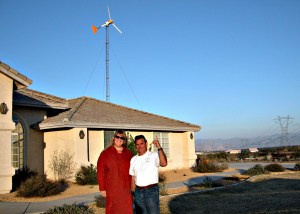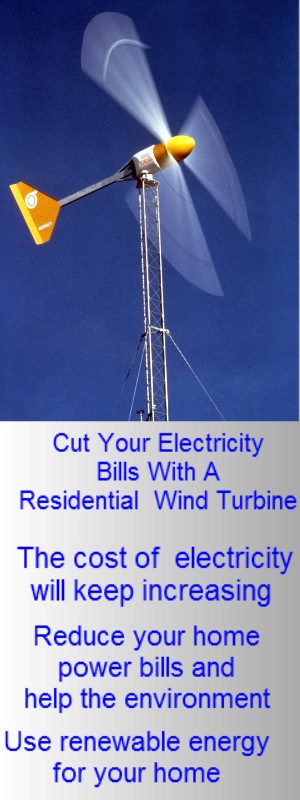One way we can save money is by generating our own electricity with a residential wind turbine. Not only are we benefiting ourselves but we are also contributing to cutting factors that pollute our planet.
9 Advantages of Using A Residential Wind Turbine
By Rickey Benns | Co-Author: Josh D Howard
How do Residential Wind Turbines Operate?
Where residential applications of wind energy are concerned, homes are typically served by a combination of electricity provided by your local utility company and a residential wind turbine. “Cut-in speeds”, which are wind speeds falling below 7 to 10 mph, will not generate any electricity.
Unfortunately, this means that you still have to rely on your local utility company. As wind speed increases, so does the output of energy produced by the residential wind turbine, which decreases the reliance on the utility company for your home’s electrical needs.

An Overview of Residential Wind Turbines
Despite the fact that commercial wind turbines are becoming a common site in certain areas of the US, wind turbines developed and manufactured for home use are growing in popularity. A Residential wind turbine is manufactured on a smaller scale than the commercial types and can range in diameter from 7 to 25.
Based on their tested wind speeds, they can easily produce anywhere from 900 to 1,000 watts of power while operating. Additionally, since they are lighter in weight, they are much more sensitive to changes in wind speed and react quicker to wind gusts than the commercial ones.
The bottom line is that the price of energy continues to rise every day. As the fossil fuel supply continues to diminish, the cost of energy keeps escalating and so does our reliance on international sources of fossil fuels. So the basic premise for choosing alternative energy sources is to decrease our dependence on the utility companies as well as foreign fuel sources.
Employing renewable energy sources also helps decrease greenhouse gas emissions and global warming because it is a non-polluting source of energy.
Advantages of Residential Wind Turbines
The advantages of using a residential wind turbine to produce energy for your home are numerous, but the following are the most significant ones which we have listed here:

1. Wind is normally available and plentiful where you live, although some geographical areas tend to be windier than others.
2. Environmentally speaking, wind is a renewable source of energy.
3. Wind energy is inexpensive as well as widely distributed.
4. Wind energy reduces the amount of pollutants that are released into the atmosphere because the use of fossil fuels for power is non-existent which means that it is non-polluting and dramatically reduces the “greenhouse effect”
5. Wind is widely available, thus decreasing our dependency on our local utility companies and foreign fuel sources, so it is beneficial from an economic standpoint.
6. Wind farms create a smaller “footprint” on the environment compared to fossil fuel burning plants.
7. These turbines easily share space with cattle and crops on farms as well as other more rural locations.
8. Wind energy is available in remote locations that can’t be reached by the electrical grid. However farms, mountainous areas, and third world countries can take advantage of such remote locations.
9. Using wind energy creates jobs which are outpacing other segments of the economy.
Josh Howard is a Going Green enthusiast. For more
great tips and advice on residential wind turbines, visit
http://www.GoingGreenDIY.com
Article Source: http://EzineArticles.com/expert/Rickey_Benns/184833
